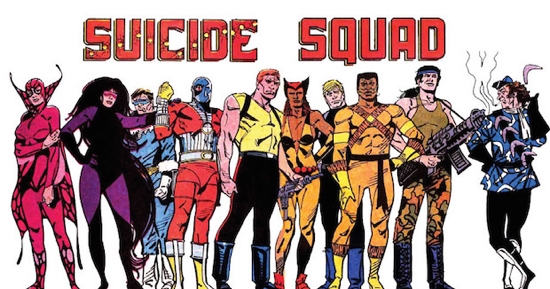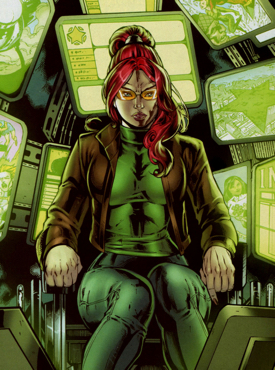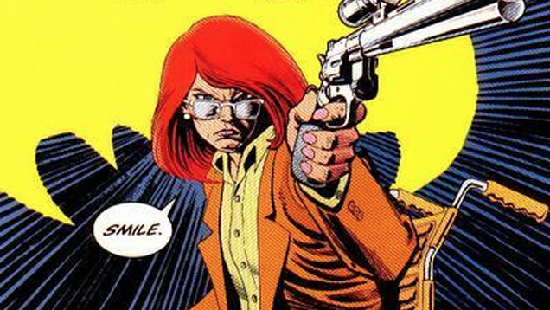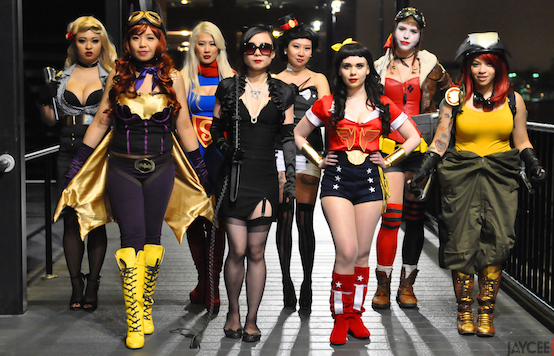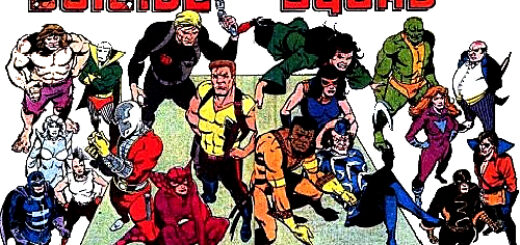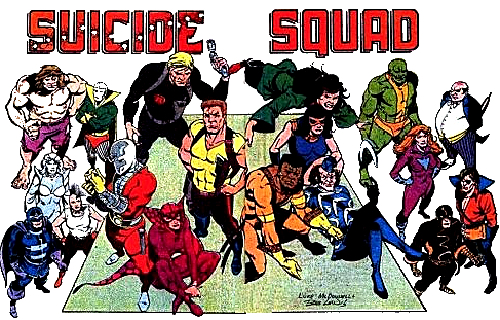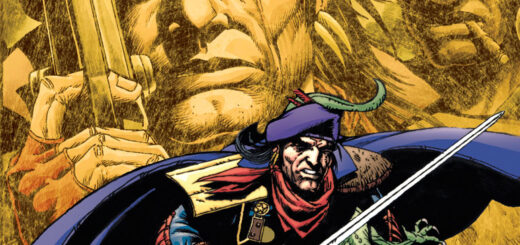John Ostrander: Through The Years
I recently was talking to my friend and frequent (and upcoming) collaborator, Jan Duursema, about just the technological changes I’ve seen in comics over the course of my career. It must be getting close to thirty years since I began all this.
When I first started, I wrote my plots and scripts on a manual typewriter with a carbon copy for me. For you boys and girls who don’t know what a carbon was, it was a black inked piece of paper that you placed between the first and second pieces of paper. As the typewriter key struck the first page, the force of it would penetrate the carbon and leave an identical letter on the second page. If you hit it hard enough. In theory.
When I began, I wrote out my plots and scripts in longhand on yellow legal sized pads of paper from which I would then transcribe to the typewriter. It was easier to make corrections on the yellow pad than on the typed page. There, if you even made a spelling mistake, you had to haul out the Wite-Out (sic) or Liquid Paper. These were small round bottles of white paint with a cap with a small brush in it and it was a pain to use. If you didn’t seal it up properly, the liquid would dry out and become unusable. Some inkers who use it to this day either for corrections or to create effects.
When I worked at First Comics, I lived in Rogers Park which is on the far north side of Chicago. The First Comics’ offices were originally in Evanston and I could walk there or take a quick elevated train trip and drop off the plot or script. It got more complicated when I started working for DC Comics as well. Their offices were in New York City and I couldn’t easily walk my stories there.
If I got my work done soon enough before deadline, I could use the U.S. mail but, as my good friend and oft-times editor Mike Gold could tell you, that is usually an unlikely occurrence. Mike once called me on a script I was doing for him and informed me I had gone past deadline and was approaching funeral line.
More often I used Federal Express and usually their overnight delivery service. DC and Marvel both provided pre-paid shipping labels in those days but, still, there were too often the mad dashes to the FedEx office. The closest one to me, by odd happenstance, was in Evanston near the First Comics offices. The key was to get there before it closed (promptly at 5 PM as I recall). If you missed it and you had to get the script in the next day, it necessitated the late night run to the central FedEx office out near the airport. When I finished the writing really late, it meant a mad dash to try to get to that FedEx office before it closed at midnight. I remember one especially hairy run with my wife, Kim, driving and running red lights while I stuffed the pages onto the envelope and completed the shipping label. Some nights it was like a gathering of the local comic book fraternity of both writers and artists as we all tried to slip in under our respective deadlines.
I thought I had graduated to technical nirvana when I traded the manual typewriter in for an electric one. This one had a correcting ribbon built in! However, this was also soon replaced when I bought my first computer. Mike and others in the industry had been pressuring me to get one but, as usual, I was resistant. I am usually not the first to embrace a new technology. I may not be the dead last to do so but it’s usually a near thing. I got a Mac because that’s what most of the people I knew in the industry had.
Side note: one of the beefs I have with the movie Independence Day was that, at the climax, the alien mothership is destroyed by a computer virus introduced into its systems by a Mac computer. Macs couldn’t talk much with other computers on Earth; it can talk to an alien computer? Bah!
Working with a computer enabled me to quickly correct mistakes and, as I went on, I discovered spell-check. An even bigger discovery was the Internet and email. With email, I could simply send my work in and the offices would get it the next second. Which of course enabled me to push the deadline even harder.
With the Internet, I also discovered I could do my research when I needed it without setting foot outside my door. Previously, I had to go to the nearest available library during library hours, hoping they would have something. That wasn’t useful when I was working on something in the middle of the night. With the Internet and search engines, I could look up anything at any time.
Sometimes, however, you can get lost in research. I remember on an early Suicide Squad story I spent a lot of time looking up Soviet train schedules to see if my team could possibly get to certain places I said they got at the times when I had them doing that. Was that strictly necessary for the story to work? Well, no. But I think I hit my obsessed button and I couldn’t get out.
Another advantage of working with computer was that I could work more efficiently and could take on more assignments. OTOH, it also offers many more ways of goofing off. Hellooooo, Facebook!
These days I no longer write my stories out long hand; I compose right on the computer. However, I do use a written journal with which to work out the stories and characters. That still feels more natural. My thoughts seem to flow from my brain down my arm through my pen and onto the page. It’s more organic, more creative, for me that way.
The point of all this is that while I have had a good long career it hasn’t been that long since my days with the manual typewriter and the Liquid Paper. I’ll probably be getting another computer fairly soon; I’ve had the one on which I write this for more than a few years and it’s time. I suspect I won’t fully understand everything the new computer does; I doubt if I really understand even half of what my current one does. Technology has made me a more prolific writer – but has it made me a better one? Actually, I think it has. Re-writing has become easier, for one thing.
However, I don’t think it has made me better on my deadlines. How close am I to the funeral line, Mike?




